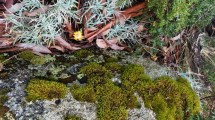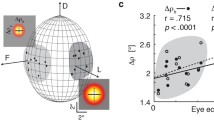Abstract
Pairs of black patterns on a white background, one rewarded the other not, were presented vertically each in one arm of a Y-maze. During training the locations of the black areas were changed every 5 min to prevent the bees using them as cues, but cues from edges were kept consistent. Bees detect orientation even in a gradient that subtends 36° from black to white (normal to the edge). Orientation cues in short lengths of edge are detected and summed on each side of the fixation point, irrespective of the lay-out of the pattern. Edges at right angles reduce the total orientation cue. The polarity of edges in a sawtooth grating is weakly discriminated, but not the orientation of a fault line where two gratings meet. Edge quality can be discriminated, but is not recognised in unfamiliar orientations. When spot location is excluded as a cue, the orientation of a row of spots or squares which individually provide no net orientation cue is not discriminated. In conclusion, when locations of black areas are shuffled, the bees remember the sum of local orientation cues but not the global pattern, and there is no re-assembly of a pattern based on differently oriented edges. A neuronal model consistent with these results is presented.
Similar content being viewed by others
Author information
Authors and Affiliations
Additional information
Accepted: 5 March 2000
Rights and permissions
About this article
Cite this article
Horridge, A. Pattern vision of the honeybee (Apis mellifera). What is an oriented edge?. J Comp Physiol A 186, 521–534 (2000). https://doi.org/10.1007/s003590000103
Issue Date:
DOI: https://doi.org/10.1007/s003590000103




